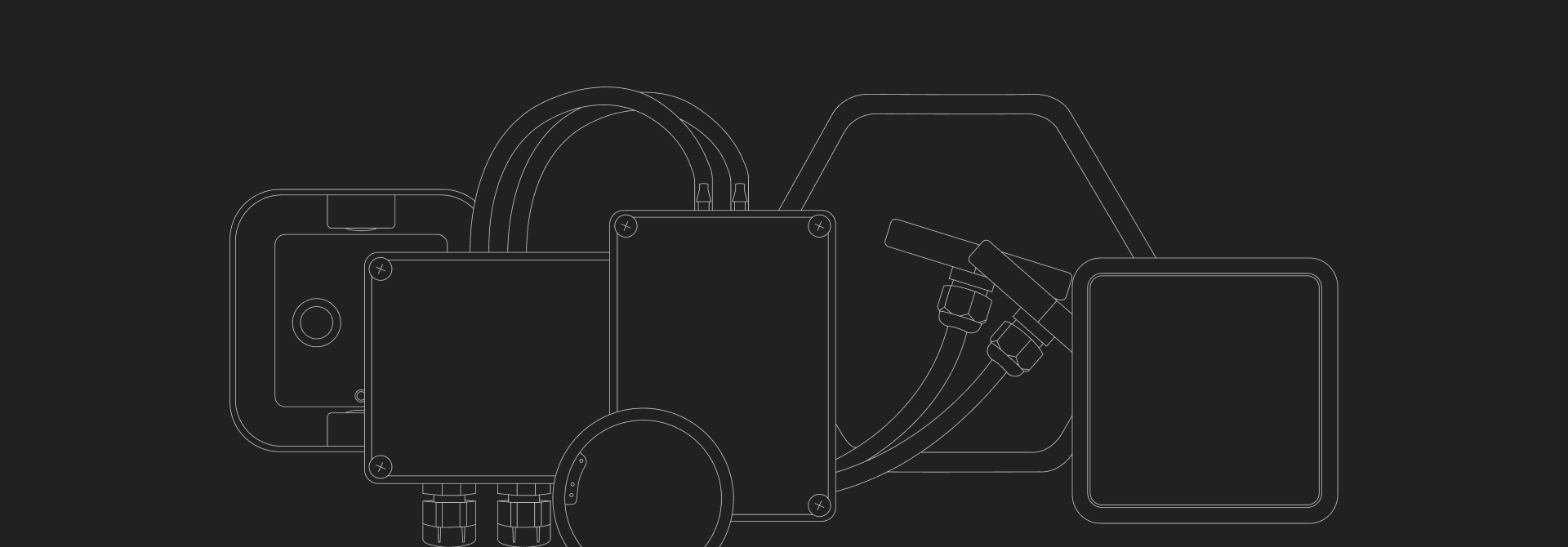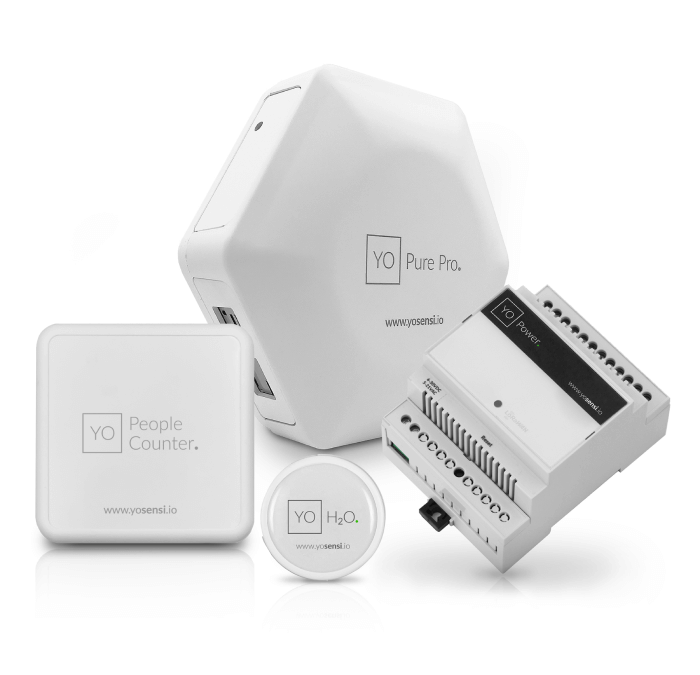
IoT should be collecting data on nearly everything
We are pleased to present the interview given by Pawel Poplawski R&D Director & Founder Yosensi to cybernews.com
We are pleased to present the interview given by Pawel Poplawski R&D Director & Founder Yosensi to cybernews.com
The explosion of IoT devices has revolutionized the way we collect data in many areas.
Even though it may open the door to new cyber attacks, a stronger flow of information now means the device's manufacturer can analyze trends in data to improve it while also saving valuable time and resources.
Today, we invited Pawel Poplawski, Director of Yosensi, to discuss what is stopping some companies from implementing these innovative solutions and what security measures, aside from robustantivirus, are taken to protect such large amounts of data since many companies are realizing the power and potential of this technology.
Cybernews.com: How did Yosensi originate? What has your journey been like?
Pawel Poplawski: Yosensi was formed very naturally – the company emerged from its parent company, software house Netbulls. In short, there was a market demand for telemetric devices communicating via radio using long-range (LoRa) technology, and our company had the competencies to design, manufacture, and write firmware for such devices.
The first projects for the Internet of Things devices were still being developed under the wings of Netbulls. For at least 1.5 years, a team of electronics engineers created devices before the creation of the Yosensi company. At that point, it became apparent that it was time to spin off the telemetry company formally.
Our first assumption was to create a generic device that supports as many sensors as possible so that the customer can indicate what type of parameters he wants to measure. Then, based on that single device, we create a solution that fits his business. The market has supported this idea, and we are now creating strictly dedicated devices.
Cybernews.com: Can you introduce us to what you do? What industries are your products mostly used in?
Pawel Poplawski: We create devices on the Internet of Things that communicate over long distances with low energy consumption. We use an innovative form of data transmission, the LoRaWAN network. In addition, we have specialized automation and machinery, so the entire production process takes place in Poland.
Our devices are mainly used in the facilities management, industry, agriculture, and smart city sectors. Yosensi devices are primarily sold in the UK, Australia, New Zealand, and the USA. However, we have customers in other parts of the world, including Malaysia, Saudi Arabia, and many others.
Cybernews: Has the pandemic somehow altered your field of work? Were there any new features added to your products?
Pawel Poplawski: The pandemic obviously had a profound impact on our industry. Due to the pandemic, remote working, and mobility constraints, many customers felt an urgent need for remote measurement of specific parameters. On the other hand, the lack of availability of components has become a problem, and component prices have skyrocketed.
In the COVID era, there is an increased awareness of the importance of air quality and the environment in which we live. Thus, we have revised one of our devices that tests air quality and general room conditions – the YO Pure Pro. This device measures particulate matter (PM2.5 and PM10), carbon monoxide (CO), carbon dioxide (CO2), total volatile organic compounds (TVOC), atmospheric pressure, lighting, temperature, humidity, and noise levels. All the data transfers are over the LoRaWAN network.
Collecting these parameters gives us vital information, such as whether to open a window because the CO2 concentration in the room is too high. Thanks to YO Pure Pro, we know if the air in the room is too dry, if the light intensity negatively affects our vision, or if the noise damages our hearing. The icing on the cake is the information about air pollution. The YO Pure Pro measures atmospheric aerosols (PM2.5) with a diameter of no more than 2.5 µm, which, according to the World Health Organisation, are the atmospheric pollutants most harmful to human health.
In addition, the sensor measures particulate matter with a diameter of less than 10 µm (PM10), including sulfur, heavy metals, highly toxic chemical organic compounds such as dioxins and polycyclic aromatic hydrocarbons (e.g. benzo-a-pyrene), as well as allergens such as pollen and fungal spores.
Cybernews: What types of devices do you think would greatly enhance operations for any kind of business?
Pawel Poplawski: Definitely devices that are used to count the number of people in various facilities such as public and educational buildings, offices and stores. With this information, buildings can be managed in an efficient way. In particular minimise electricity and heat consumption, manage ventilation and air conditioning. The topic of reducing electricity consumption has been one of the most popular topics of discussion recently, so we should look for solutions that will really help to reduce this consumption. We currently have the YO People Counter device in the final testing phase and will soon introduce it to official sales.
In addition to this, any air quality monitoring devices, for example the aforementioned YO Pure Pro.
Cybernews: In your opinion, why do certain companies hesitate to implement new and innovative solutions, despite all the technological advancements available nowadays?
Pawel Poplawski: I think this hesitation may be due to a lack of resources and the belief that an IoT person is necessary on the client side. We build our solutions so that the customer gets everything they need without requiring specialist knowledge. Yosensi devices measure and transmit the data, and the Yosensi Management Platform displays and analyses this data. Setting up these devices in our system is easy, and the Yosensi Support Team is always there for our customers.
Moreover, our service provides data in a convenient format for data
analysis. It is up to the customer to decide what they want to do with
the data, and this may be the crux of why they hesitate to purchase our
devices. Some of our devices collect "preventative" data, e.g.
providing information on power consumption anomalies (YO Power) or
detecting flooding (YO H2O).

Pawel Poplawski: Whatever network we use must be secured in a way specific to that network. We use LoRaWAN and Bluetooth Low Energy technologies and the security provided by the creators and developers of these technologies.
The main risk is that someone may break into specific devices or systems to steal data or cause damage. We recommend that you keep the firmware of your devices updated and, if you do not have your own gateway, use a sizeable network that takes care of the security.
Cybernews: What security tools should critical companies and average individuals have to combat these threats?
Pawel Poplawski: Proper safeguards include multi-step authentication, granting rights to the appropriate people, tools for storing keys and confidential data, updates, monitoring the network, and the data contained on employees' drives.
Many activities, tools, and features impact security. Above all, it is necessary to have a mindset with a security-first approach.
Cybernews: What technological advancements do you hope to see become commonplace in the next few years?
Pawel Poplawski: IoT should be in every aspect of our lives, collecting data on nearly everything. An important topic is monitoring occupancy in offices and rooms. In a few years, this practice will be standard.
This knowledge will make it possible to control the amount of air exchanged (air conditioners), the intensity of lighting, and everything related to energy consumption. It will be realistically possible to reduce the energy consumption of buildings.
Cybernews: What does thefuture hold for Yosensi?
Pawel Poplawski: Our plans for the future are to expand our product portfolio with new solutions. We are investing in the latest technologies and developing the Internet of Things because it is the future. It is the only right direction.



